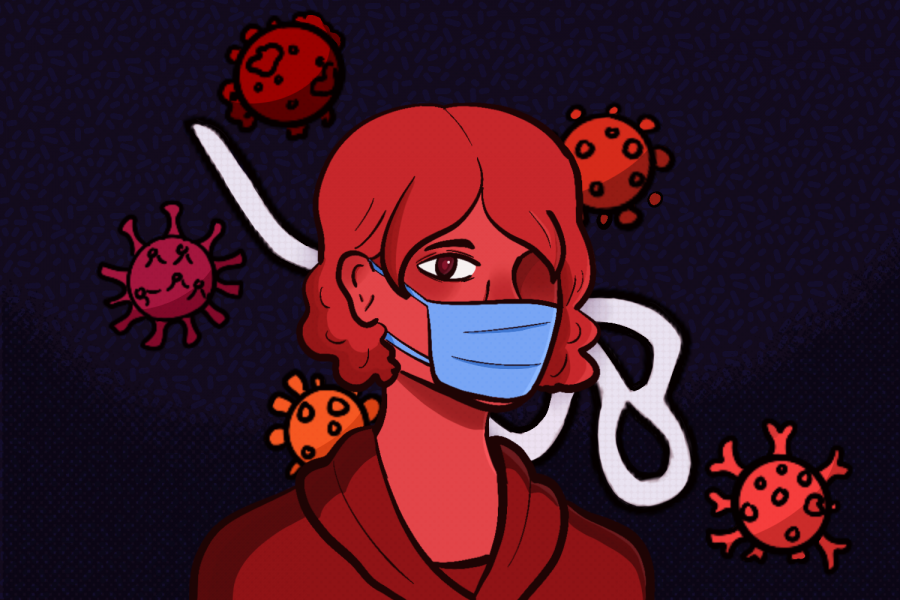Amid uncertainty, many people feel the need to lean on safety guidelines for a sense of security. However, those measures may not always be as effective as some would like them to be and can lead to a host of other problems, such as pollution, both of the planet and the mind.

While masks are proven to be effective in stopping the spread of COVID-19, they leave pollution in streets and oceans with ear loops that can choke and kill animals. It is common to see discarded masks on the side of the road and even around Carlmont’s campus.
Looking back to past pandemics enables comparisons of the safety measures in place. Regarding the 1918 flu pandemic, according to the Centers for Disease Control and Prevention (CDC), the main measures in place were quarantine, isolation, limiting public gatherings, using disinfectants, and good personal hygiene; there were no vaccines or antibiotics to treat the virus and the infections it caused.
These guidelines are strikingly similar to those that most people have experienced due to the COVID-19 pandemic. Some programs have been made increasingly difficult by these restrictions. In Carlmont’s instrumental music program, students that play wind and brass instruments must wear specialized masks, and bells have covers.
“You need your reed, you need your drumsticks, you need your music binder… and you also need your bell cover and your mask,” said Jordan Webster, Carlmont’s instrumental music teacher. While these measures make playing instruments more complex, Webster added that students “understand that the alternative is that [they] don’t play. It is a hassle, but it’s also normalized over time.”
Some demographics were more disproportionately affected by the COVID-19 pandemic than others. The surge of Asian American hate during the pandemic inspired many to protest for the Asian American and Pacific Islander (AAPI) community’s right to exist without fear of experiencing a hate crime.
This movement mirrors the fight against homophobic stigma during the AIDS pandemic in the eighties. Many slogans, such as, “We need research, not hysteria!” became widespread during protests of the stigma and hatred against LGBTQ people, particularly gay men, during the AIDS crisis. Similar to when former president Donald Trump penned COVID-19 the “kung flu,” many called AIDS “gay cancer.” The misinformation spread about both of these viruses resulted in an increased amount of hate crimes against Asian American people and LGBTQ people.
So, while safety measures such as wearing masks or using protection while participating in sexual activity are effective, the stigma surrounding minority groups makes living during a pandemic lots more dangerous and challenging for these people. People associate these safety measures with contagion, and they want a scapegoat. That is the actual disease. There must be better safety measures put in place, not only to protect from viruses but to shield vulnerable demographics from bigotry and hatred.













